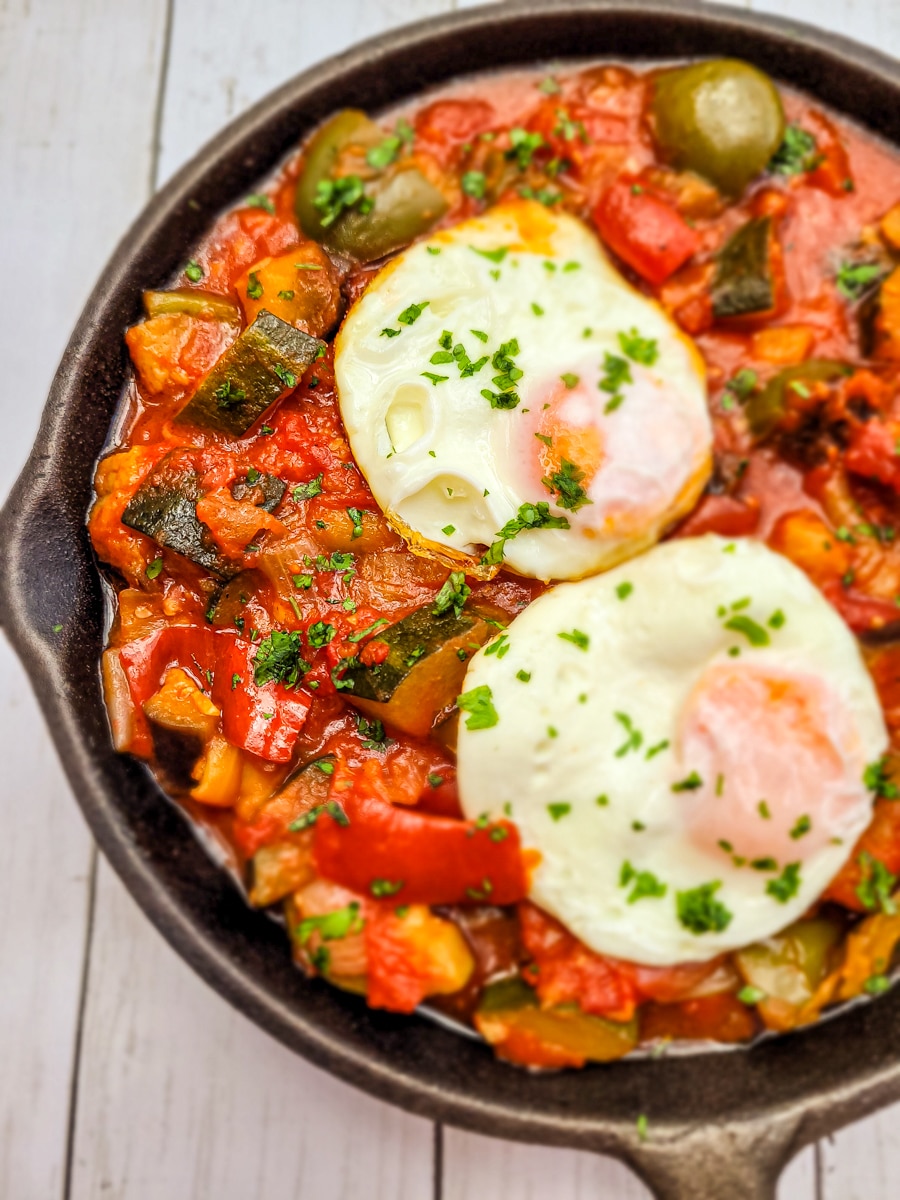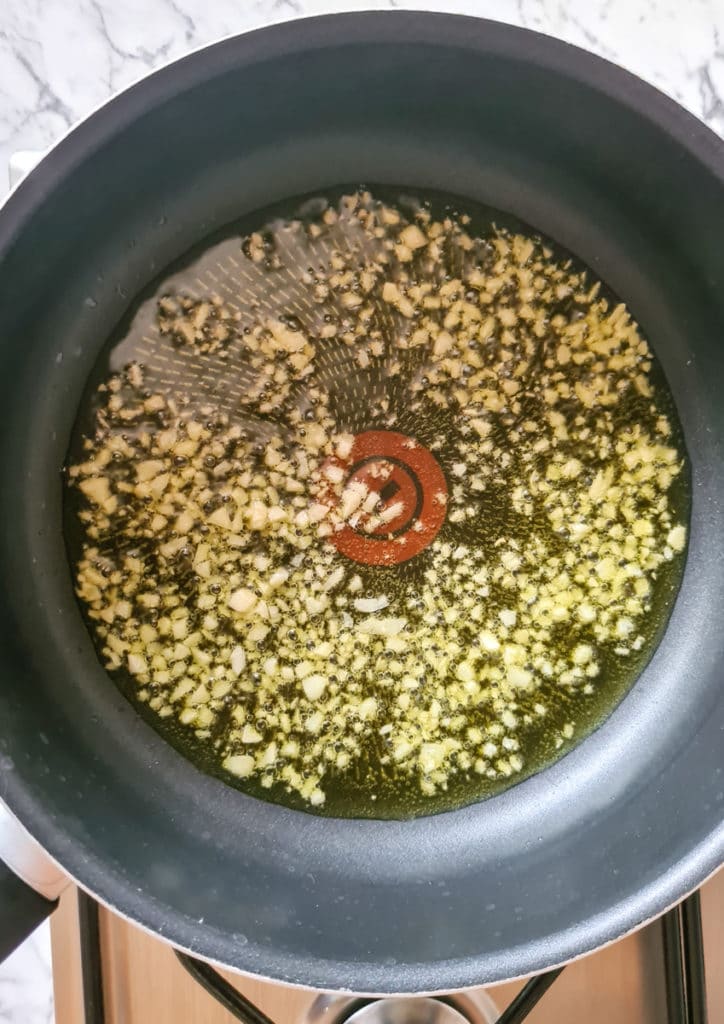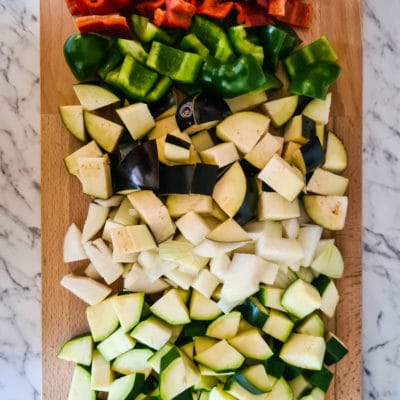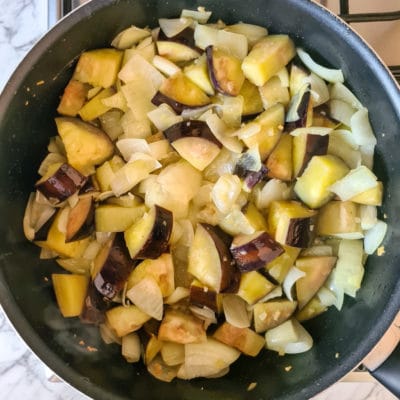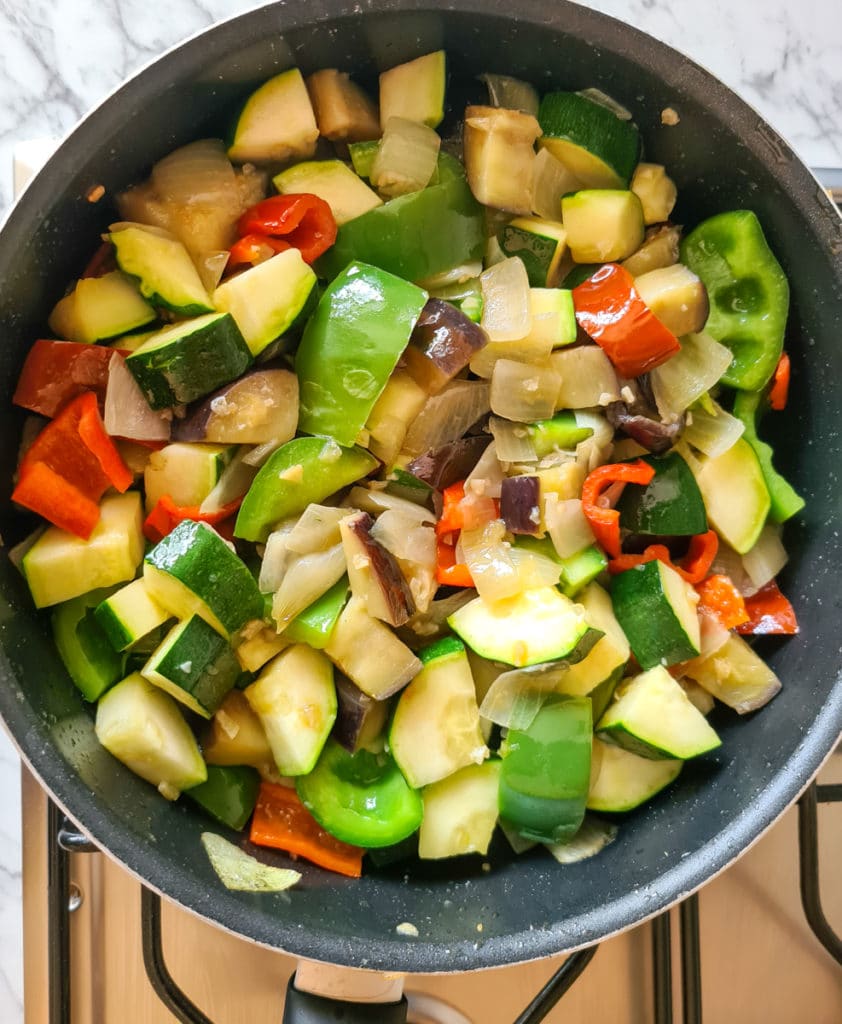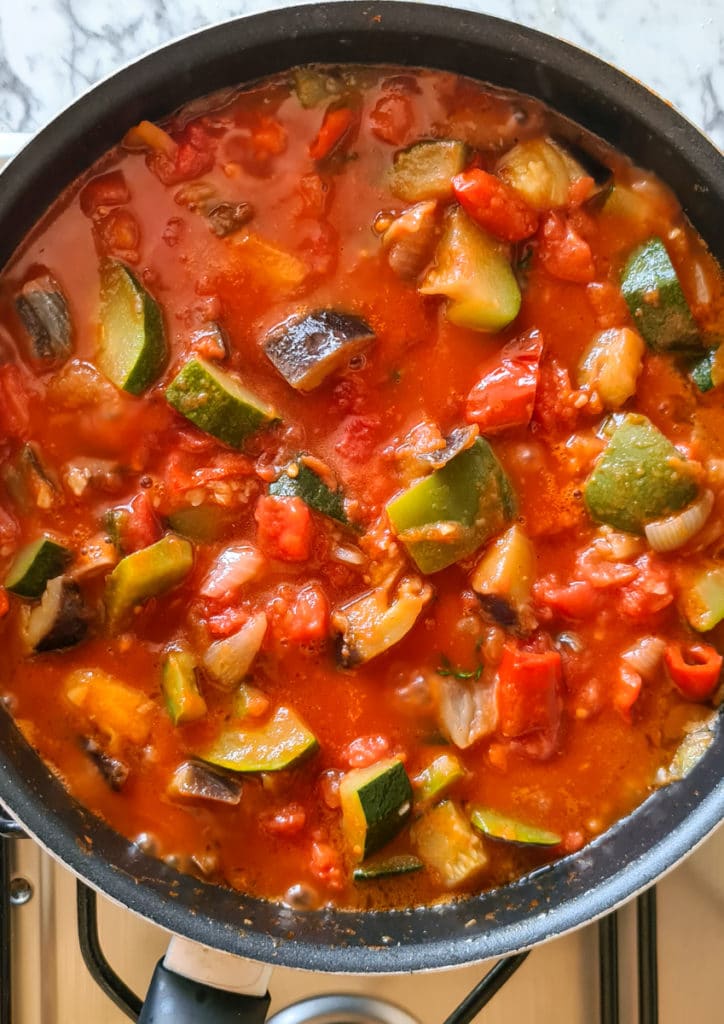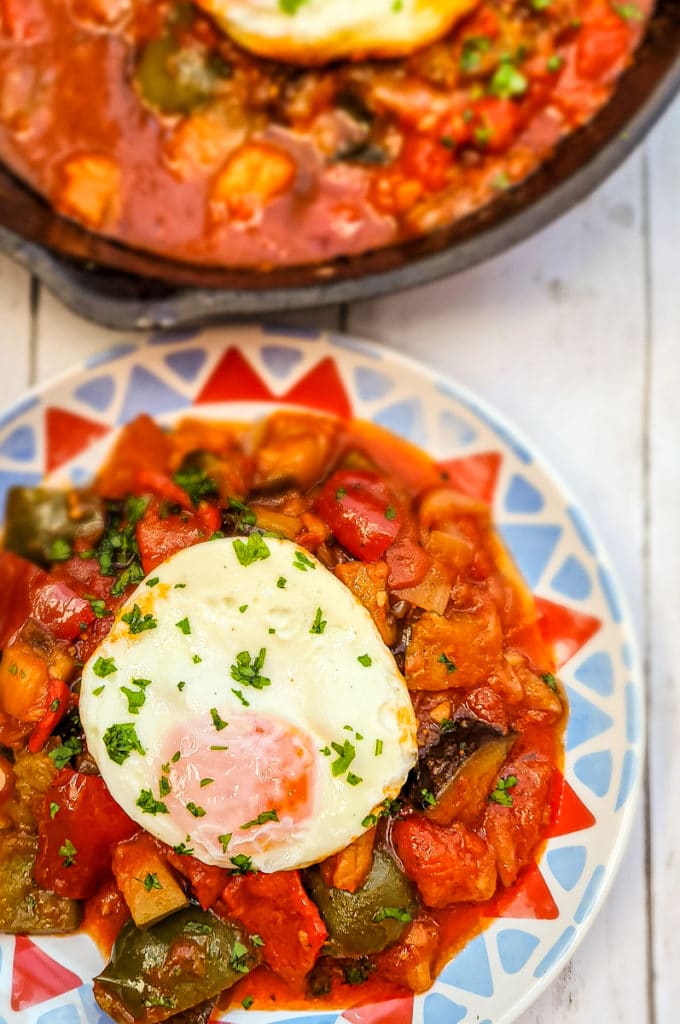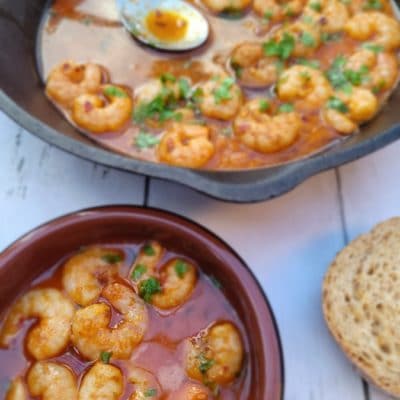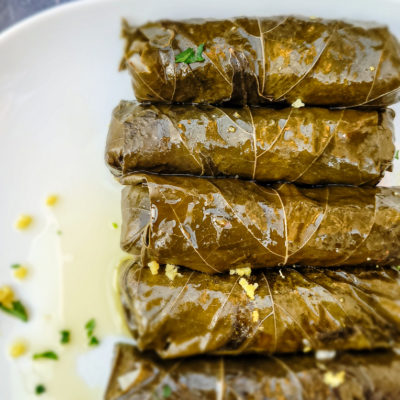Ingredients
-
1 pcs green pepper chopped
-
1 pcs red pepper chopped
-
1 pcs zucchini chopped
-
1 pcs aubergine chopped
-
2 pcs onion peeled roughly chopped
-
4 pcs Garlic cloves chopped
-
2 pcs tomatoes tinned and chopped
-
50 ml Olive oil
-
2 teaspoons Salt
-
a pich Black pepper
-
a pinch sugar
-
a few stems fresh parsley chopped
-
a few stems fresh thyme
Directions
What’s Pisto?
Pisto is a tasty Spanish vegetable stew enjoyed by Spaniards and Spanish cuisine enthusiasts around the world. This dish is similar to the French ratatouille and is made delicious through the various ingredients to result in a delectable stew. These include eggplant, onions, zucchini, green and red pepper, tomatoes, and olive oil.
What makes this vegetable stew tastier is the quality and quantity of olive oil used, just like most Mediterranean stews. Additionally, the vegetable must be fresh from the market, and the resulting it is a delicacy of its kind. Pisto originates from the Spanish Murcia region but is now a delicacy in the entire country.
Ratatouille Versus Pisto
Pisto closely resembles ratatouille and uses Mediterranean vegetables simmered in rich olive oil. Due to the similarities, it shares with the French delicacy, people often call it Spanish ratatouille.
Some people, however, argue that the pisto recipe came into existence much earlier than ratatouille and later found its way to France from Castilla La Mancha. Despite the different theories surrounding their origin, both are equally delicious.
The difference between these delicacies is somewhat insignificant, with ratatouille using vegetables that tend to be chunkier. Pisto uses smaller vegetable pieces.
It is famous across the Mediterranean countries, with different regions having their version of the vegetable stew. In Hungary, they call their variant lecho and in Croatia it is sataraš.
How do you serve Pisto?
This Spanish vegetable stew is enjoyed warm, served with eggs for breakfast. It also goes well with bread and manchego cheese. Some people enjoy this delicacy as a side meal alongside fish or meat. Generally, if you’re looking for a fantastic vegetable delicacy for your vegetarian or gluten-free diet, it is an excellent choice.
The Spanish vegetable stew can also spruce up your lunch when served alongside sausages or grilled chicken, thanks to its great taste when served cold.
What’s the origin?
Pisto recipe has come from far to be popular in Spanish homes and restaurants across the world. The recipe first came from Extremadura and Castilla La Mancha, in the Spanish region of Murcia. The authentic pisto recipe is from Castilla La Mancha, but Extremadura has a slightly different version known as pisto extremeño.
In Bilbao, the vegetable stew people call pisto a la Bilbaina. It is almost similar to the origin, with the difference being that the former includes green pepper and courgettes in the tomato sauce.
The secret to making pisto tastier and more delicious is in using fresh, high-quality vegetables. As such, it isn’t common during the winter months since veggies’ quality during that time isn’t favourable. To make it delicious you need fresh and ripe vegetables, which are readily available only during summer.
Some recipes advise cooking the vegetables separately. This approach is time-consuming, but the results are rewarding as the vegetable stew ends up very delicious. And the olive oil is a critical ingredient in the recipe as it’s what gives its rich flavour.
Steps
|
1
Done
|
|
|
2
Done
|
|
|
3
Done
|
|
|
4
Done
|
|
|
5
Done
|
In another pan, heat the oil and fry the eggs so that the yolk is slightly hard. |
|
6
Done
|
